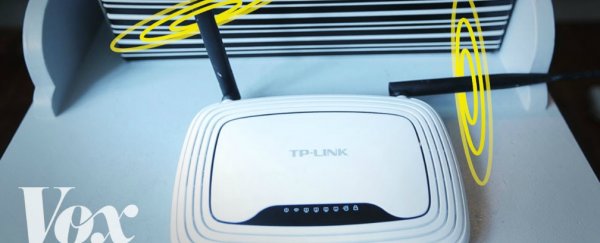By now, most Australians know that our university researchers were behind the invention of the bionic ear, but more often than not, the world tends to focus more on our venomous snakes and spiders and overly muscular kangaroos than anything coming out of our labs.
But the reality is that Australia puts out 3.9 percent of the world's research, with only 0.3 percent of the world's population, and a lot of that research has been translated into inventions and products that you use everyday… like penicillin and Wi-Fi.
Unfortunately, without adequate funding, these types of world-changing ideas can't continue to be developed on our home soil into the future, and we could be at risk of losing our best researchers to overseas institutions.
With a new(ish) Prime Minister who's all-guns-blazing on innovation, it's time to remind the government why we need to support Australian research by signing the Keep it Clever petition, which is being run by Australia's peak university body, Universities Australia.
You can read their policy statement on the importance of funding Australian university research here, and read the list of Australian inventions below to see what's at stake:
1. Seatbelts
It seems normal to wear seatbelts these days, but only 50 years ago hardly any cars had them, and next to no one wore them. It was research by Monash University scientists back in 1964 that led to the world's first laws that seatbelt anchorages be installed in all new cars. Think of all the lives that have been saved since.
2. Medical application of penicillin
Australian researcher Howard Florey worked with a team in the UK to purify penicillin from a special strain of mould, and later showed it could fight bacterial infection in humans. The antibiotic changed modern medicine forever.
3. Disease diagnosing nano-patches
This is still a relatively new invention, but these nano-patches have the potential to change the way we diagnose disease in the future. Developed by researchers at the University of Queensland, these patches are covered in tiny microscopic needles that can quickly and painlessly detect disease-carrying proteins in the blood, without the need for a blood test.
4. Wi-Fi
This story is pretty well-known these days, but Australian researcher John O'Sullivan and his team were originally looking for black holes when he realised the potential of the radio waves they were detecting. In 1992, he worked with the CSIRO to develop Wi-Fi technology.
5. Bionic ear
One of our best-known exports is the Cochlear implant, which was created by Graeme Clark, a researcher at the University of Melbourne at the time. The device has helped more than 250,000 people with profound hearing loss to hear again.
6. Spray-on skin
Spray-on skin has saved the lives of tens of thousands of burns victims around the world, and was invented by Fiona Wood from the University of Western Australia. The invention works by taking a small patch of a patient's skin, then growing it in the lab so that it can be sprayed back on as a protective barrier over wounds.
7. Ultrasound scanner
Every expectant mum will be more than familiar with the ultrasound scanner. But what people might not know is that the initial discovery that ultrasounds could bounce off soft tissue was made by the CSIRO, and in 1976 it was commercialised by Australian company Ausonics.
8. Electronic pacemaker
The first pacemaker was made impulsively back in 1926 at Sydney's Crown Street Women's Hospital to help save a newborn patient suffering from heart problems. The device used to stimulate the baby's heartbeat with electric pulses and was created by medical doctor Mark Lidwill, but he was so concerned about the ethical implications of his invention that he refused recognition and patents, despite his invention saving hundreds of thousands of lives around the world.
9. Gardasil and Cervarix vaccines
Most women under the age of 30 have received one of these vaccines to protect them from the human papillomavirus (HPV), which has been shown to greatly increase the risk of cervical cancer. The vaccines were developed by Ian Frazer from the University of Queensland and have been shown to reduce the virus infection rate by more than 90 percent.
If you want to see more of these inventions come out of Australia in the future, make sure you sign the Keep it Clever petition, and share the list with your friends to spread the Australian science love.
This post was sponsored by Universities Australia. Find out more about their campaign.
